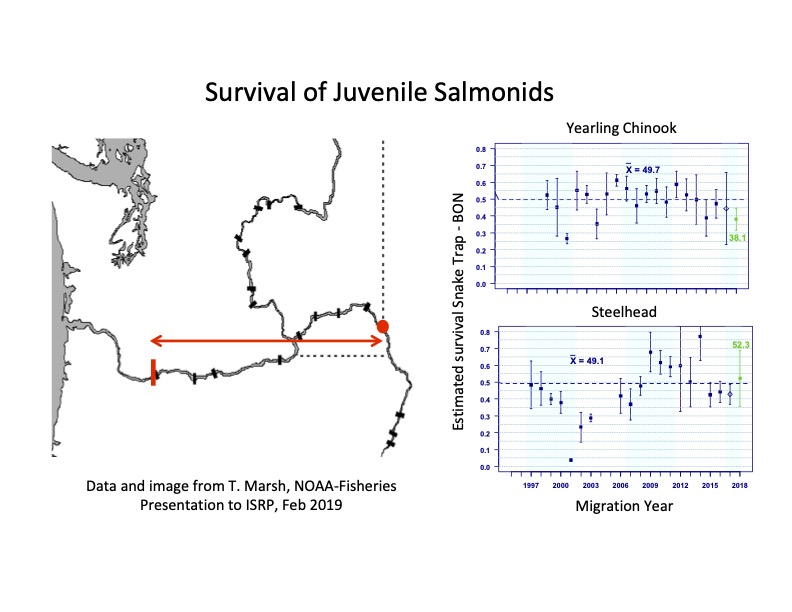forum
library
tutorial
contact

Ag Stakeholders Consider Next Steps
on Snake River Dams
by Matthew Weaver
Capital Press, August 30, 2022
|
the film forum library tutorial contact |

|
Ag Stakeholders Consider Next Steps
by Matthew Weaver
|
Breaching is the best option to help endangered salmon
but it would be "disastrous" without replacing dam benefits.
 Agricultural stakeholders' opinions are mixed about the impact of a report commissioned by Washington Gov. Jay Inslee and U.S. Sen. Patty Murray on removing four lower Snake River dams.
Agricultural stakeholders' opinions are mixed about the impact of a report commissioned by Washington Gov. Jay Inslee and U.S. Sen. Patty Murray on removing four lower Snake River dams.
Both sides of the debate are likely to find themselves back in court "rather quickly," predicted Darryll Olsen, board representative for the Columbia-Snake River Irrigators Association.
The four dams are a frequent target for environmentalists, who say they hinder salmon passage. Agriculture stakeholders dispute the claims, and say the dams are vital to the region's farms, energy production and transportation.
"They're not going to just sit back and say, 'OK, we'll wait 20 years for somebody to convince Congress to do something,'" Olsen said. "I just don't see it. There's such a volume of powerful political opposition to the dams. They're not going to let it go away quietly in the night."
Heather Stebbings, executive director of the Pacific Northwest Waterways Association, said the breaching discussion is pushed farther into the future because of the report.
Litigation on the Columbia River system has been stayed until September 2023 in favor of federal mediation.
"We're looking forward to participating in that process and that's where we'll be focusing some of our efforts of what needs to be done in the basin for fish," Stebbings said. "We've been waiting to hear from the mediators what the next steps are."
In their report, Inslee and Murray said the state and federal governments should come up with a plan to replace the benefits of the dams before moving forward with any plans to take out the dams. Doing that will run in the tens of billions of dollars.
Breaching is the best option to help endangered salmon, they said, but it would be "disastrous" without replacing dam benefits.
The report doesn't offer any clear direction on the dams, Olsen said. He called it "poorly prepared, regurgitating a morass of numbers without verification to facts or other professional standards that should be the parameters for this type of report."
The report provides a partial cost range of $10 billion to over $30 billion, with little understanding of what it even meant, Olsen said.
CSRIA plans to keep speaking with federal mediators, tribes and other groups to develop a permanent resolution, considering changes to the system other than breaching the four dams, he said.
Advocates for agriculture and water-borne transportation must continue to talk about the importance of the dams and their benefits, including shipping wheat by barge, Stebbings said.
"This doesn't give us a reprieve to hold back and not share our story," Stebbings said.
Related Pages:
Lawmakers Question White House's 'Lack of Transparency' on Snake River Dam Reports by Matthew Weaver, Capital Press, 8/4/22
Newhouse 'Outraged' by White House Dam Breaching Draft Reports by Matthew Weaver, Capital Press, 7/18/22
Politicians, Environmentalists Ignoring the Facts on Snake River Dams, Salmon by John McKern, Walla Walla Union-Bulletin, 7/24/22
Central Washington Ignored in Snake River Dams Reports by Rep. Dan Newhouse, Grand Coulee Star, 7/12/22
learn more on topics covered in the film
see the video
read the script
learn the songs
discussion forum
